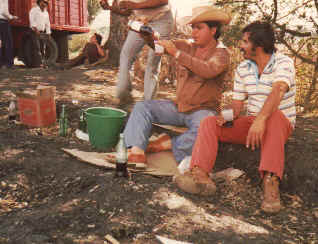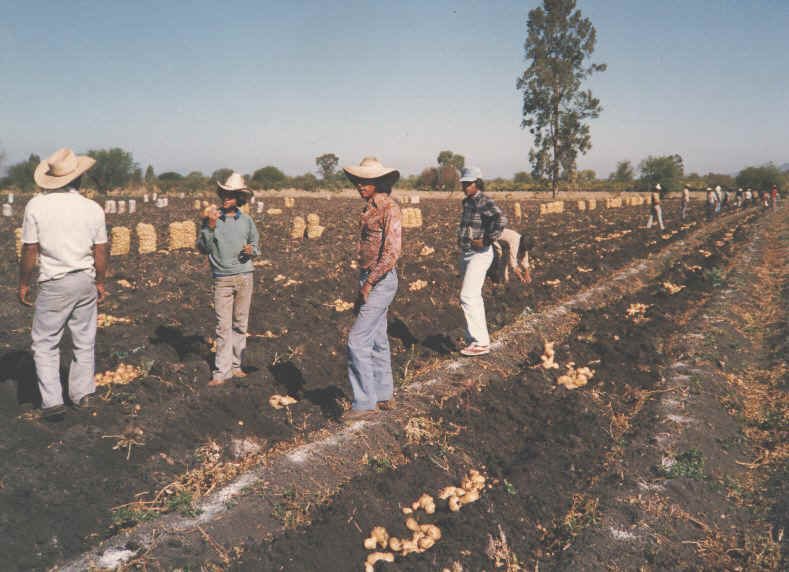 A commercial tomato grower drinks with his field hands in a rented ejido plot, 1982
A commercial tomato grower drinks with his field hands in a rented ejido plot, 1982  A commercial tomato grower drinks with his field hands in a rented ejido plot, 1982
A commercial tomato grower drinks with his field hands in a rented ejido plot, 1982
The Ciénega de Chapala was well-placed geographically to benefit from an expansion of the national and international markets for fruit and vegetable products, and did indeed do so during the second half of the 1960s and the 1970s. But it was not, in fact, the campesinos who held title to most of the land on which crops like tomatoes and lettuce were grown who earned the big money in the years when Ciénega agriculture boomed. As the state progressively withdrew its financial support from the "social sector" during the crisis years of the 1980s, more and more ejidatarios abandoned the land entirely or restricted themselves to a small amount of subsistence production in a corner of their field. Yet even as the Salinas de Gortari administration was announcing the need for profound reform of the ejido system, it was becoming apparent that it was not merely the poorer ejidatarios who were failing to survive Salinas’s neoliberal shock tactics of ending subsidies and opening Mexican agriculture overnight to the chill winds of international competition. Once relatively prosperous ejidatarios who had rented extra land on a substantial scale and been junior partners in the previous commercial boom were also going under. Even the big vegetable growers who dominated the wholesale food markets (mercados de abastos) of the metropolitan cities were contracting the scale of the operations (and thereby the amount of work available to the landless and opportunities for ejidatarios who rented out their land to the entrepreneurs or their local agents in the villages). By the middle of the 1990s, what I had first known, at the end of the 1970s, as a bustling and productive agrarian landscape had become a vista of desolation, with large areas of land left entirely unsown, and more humble fields of sorghum and maize in place of tomatoes and other high-value crops. Even the corn and sorghum fields looked impoverished by past standards, disfigured by undersized plants and reduced weight of grain.
 Day-Labourers (jornaleros) harvesting potatoes.
Day-Labourers (jornaleros) harvesting potatoes.